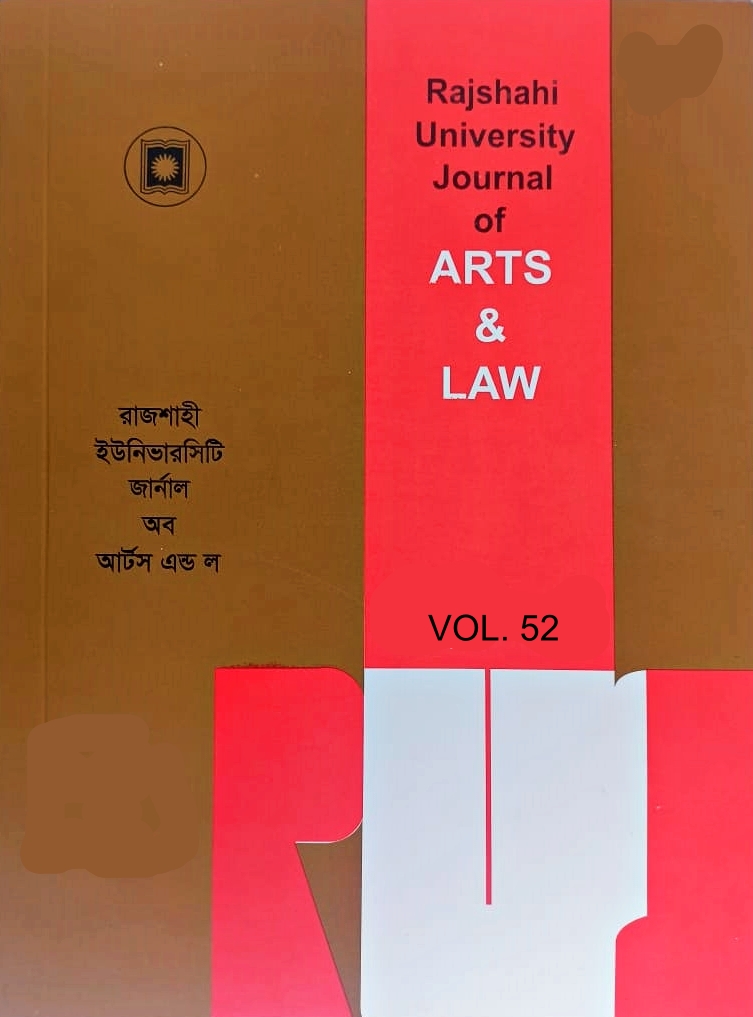Pangs of Postmemory in Amitav Ghosh's The Shadow Line
DOI:
https://doi.org/10.64102/rujal.0714Keywords:
Memory, Postmemory, Trauma, Postgeneration, TransmissionAbstract
In most of the historical fictions by Indian writers, the narrators play the role of either historians who chronicle the events of the past in macro mode or self-narrators who have been working through the trauma of the past using the self as a temporal armature in search for identity and spatiality in the present. Among the multitude of such works, The Shadow Lines of Amitav Ghosh stands out for conspicuous numbers of reasons. Although the novel is most popularly termed as a “memory novel” it also prods another new arena of academic research, postmemory. Whereas trauma studies in literature deal with first-hand trauma, postmemory concerns itself with the process of how trauma is transmitted to the next generation and its effect on them. Therefore, the paper aims to go beyond the given definition of postmemory and apply it in Ghosh’s novel The Shadow Lines to determine how the characters of the novel are affected by both non-traumatic and traumatic memories of the preceding generations, and how that is instrumental to their understanding and rendering of the world around them. This paper will also include the way postmemory plays a significant part in the formation of their ‘self’.
Downloads
Downloads
Published
Issue
Section
License
Copyright (c) 2025 Rajshahi University Journal of Arts & Law

This work is licensed under a Creative Commons Attribution 4.0 International License.





